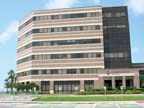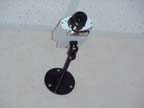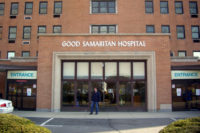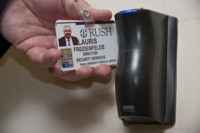Monitoring a Hospital’s Pulse

The MOBs’ property management staff worked with Bandwidth Dynamics, a telecommunications consulting company, to choose a network video surveillance system consisting of 56 network cameras (AXIS Communications, Chelmsford, Mass.) spread across five buildings. The network cameras were installed both inside and outside of buildings, near entrances, exits, elevators, fire escapes and parking lots. The system would use Xprotect surveillance application software, developed by Milestone Systems of Beaverton, Ore.

Knowing eye
The network video system enabled property management staff to continually monitor all critical areas of the buildings in real-time from their PCs. Since implementing the new system, the MOBs have already realized multiple benefits, including the ability to disprove false insurance claims, resolve employee disputes and improve worker productivity. The entire MOB staff also noted that they have better overall control over each facility’s security and management.The system gave authorized users the ability to view live video from network cameras over their PCs, provided the PC was within the building’s wide area network or WAN. The software provided the MOBs with functionality items, such as motion detection and the ability to archive and record video.
Prior to installing the system, the MOBs had no surveillance system in place – just a few security guards stationed in some of the buildings. A few years ago, one of the buildings had a major break-in. Building management at the time could not provide police with any evidence from a surveillance camera to aid in the investigation. The lessons of that incident were a major consideration in specifying that the new system be able to provide evidence.
Also before installation of the new system, building doors were frequently found to be left open all night; janitors or the property staff were often blamed. With the new network cameras in place, the MOBs could go back and review video from the nights in question to easily locate the culprit.
The hospital was also facing financial pressures from several claims filed by patients who insisted they fell in hallways or other areas of the building and injured themselves. Without video, the MOBs had no way to disprove the claims. Since installation, they have become better equipped to find out what exactly occurred during any incident.
Other incidents could quickly be brought to resolution. The network cameras recorded a delivery truck running into a staff member’s parked car in the parking lot, and subsequently pulling away without notifying anyone. The hospital was able to retrieve the video of the incident and catch the person responsible.
“As each day goes by, we’re finding more and more benefits of the network video system,” said Dan Smart, property manager for Christus Spohn Hospital MOBs. “Since installing the network cameras, we’ve been able to control costs through everything from preventing dishonest claims to increasing productivity.”
Healthy installation
To support the surveillance system, Bandwidth Dynamics built a new IP network for the facilities. The network provides an open architecture that operates over conventional network infrastructure. The company also managed installation of cabling, electrical equipment, network servers, switches and software. Each building was equipped with its own network server to support the building’s network cameras over its local area network.The MOBs plan to unify each facility over one network in the future, which will allow them to have remote access capabilities. This adaptable system would not lock the MOBs into particular product lines, giving them the flexibility to easily expand in the future and upgrade to newly launched network cameras.
Using an IP surveillance system provided cost savings and flexibility benefits for the hospital when compared with the use of an analog system. The IP-based system allowed the network servers to be easily moved if the MOBs relocated to new facilities; with an analog system, any equipment relocation would be extremely complicated.
“When assessing the available surveillance products on the market, no other brand of cameras was able to provide Christus Spohn Hospital MOBs with the flexibility and cost savings that Axis’ network cameras offer,” said Paul Smith, owner of Bandwidth Dynamics. “Christus Spohn Hospital MOBs are looking forward to a seamless installation of additional Axis products in the future.”

Sidebar: Floating Hospital Has Unique Security Challenges
Security is a special challenge for the USNS Mercy, a 1,000 bed floating US Navy hospital. There is traditional electronic security but also classified protection, especially when the hospital is at port or in certain environments. The USNS Mercy earlier this year was in the Indonesian Ocean, providing medical treatment to more than 10,000 victims of the recent earthquakes near Sumatra. Not only did the work of Project HOPE medical volunteers from across America help save lives and re-build medical infrastructure, it improved America’s image in the world’s most populous Muslim nation. Project HOPE, www.ProjectHope.org, founded in 1958, is a nonprofit health education and humanitarian aid organization. Photo courtesy: PRNewsFotoLooking for a reprint of this article?
From high-res PDFs to custom plaques, order your copy today!








